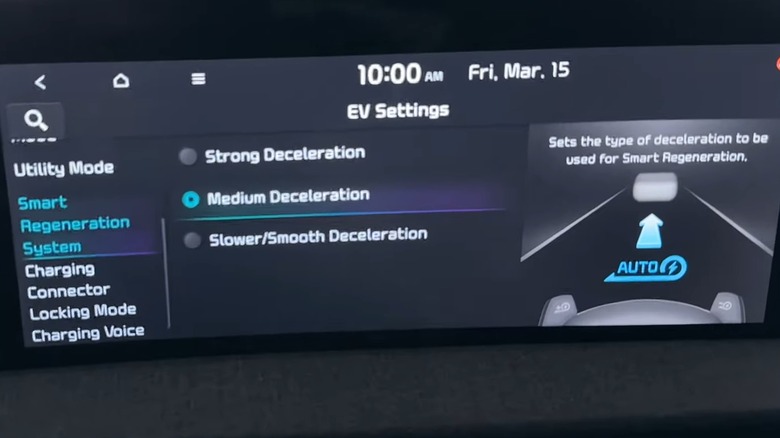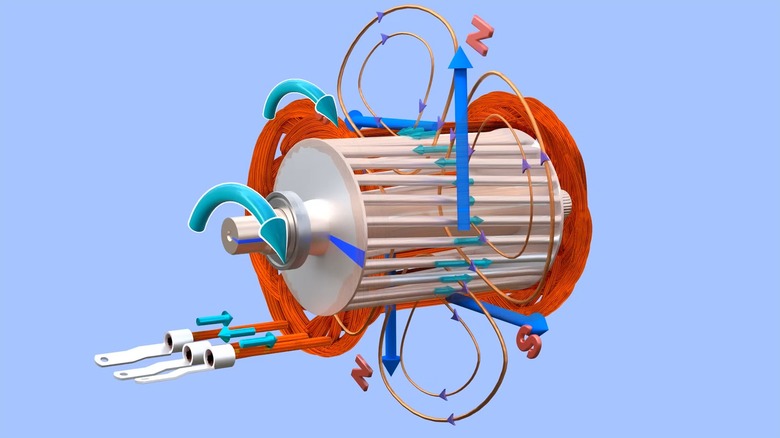Does Regenerative Braking Wear Down Brake Pads Or Save Them?
While it may seem like electric and hybrid vehicles are a recent innovation of the 21st century, these technologies have been around for over a century. The first electric car, while extremely rough around the edges, was built in 1832, and the first hybrid was invented in 1901. One curious development in the 1960s from the American Motor Car Company (AMC) was the electric Amitron, the first U.S. vehicle to use regenerative braking, an important technology for EVs.
Today, regenerative braking is available on most electric and hybrid vehicles. According to Top Gear, it can provide an additional 10% to 20% of driving range. However, decreased wear on the brake pads, calipers, and discs is one of the more significant advantages of regenerative brakes. This technology basically converts the vehicle's kinetic energy from engaging the brakes and slowing down into electrical energy.
That extra power is then run back into the car's batteries, offering a slight boost in charge level while driving. Since slowing the wheels activates regen braking, this begs the question: Will towing an EV actually charge it?
Important things to remember when driving with regenerative braking
Many electric and hybrid automobiles with regenerative braking systems allow you to control the strength of the technology. Toggling between a less impactful force and a more robust setting largely depends on the type of driving you're doing. For instance, a more aggressive regenerative braking force when traveling along the highway may become disruptive to a smooth ride, because most vehicles will activate the technology when you lift off the accelerator. On the other hand, you would want aggressive regen braking for getting around town due to the frequent stopping.
Some EVs will display a percentage of the energy being created when slowing. For maximum efficiency, the goal should be to register a 100% figure when pressing on the brake. However, if you press harder on the brake pedal — beyond 100% regeneration — the car will begin to use more of the traditional brakes, reducing the system's effectiveness. Of course, hard braking may be necessary to avoid an accident, which is obviously more important than some extra efficiency.
There are different types of regenerative braking systems
Depending on the vehicle, it could have either a mechanical or an electrical regenerative braking system. Hybrids often feature a mechanical version of this technology, utilizing physical component connections to turn an electric motor in the opposite direction to make energy. This type of regen braking system is less complex and more affordable. However, it's also not nearly as efficient as the electric version. In any mechanical system with multiple components connected, there is inherent energy loss due to friction, which converts kinetic power into thermal power or heat.
All-electric vehicles utilize electrical regen braking technology, which works a bit differently. For example, on a Tesla Model S, energy is sent to an induction motor, creating a rotating magnetic field on the stator coils. This, in turn, spins a rotor, which drives the wheels. However, this system can switch the direction of supplied current, causing the rotor bars to rotate opposite of the rotor, slowing the vehicle, and creating energy in the process. It's not just cars that utilize this technology, the Zero S Electric motorcycle and others like it also feature regenerative braking.


